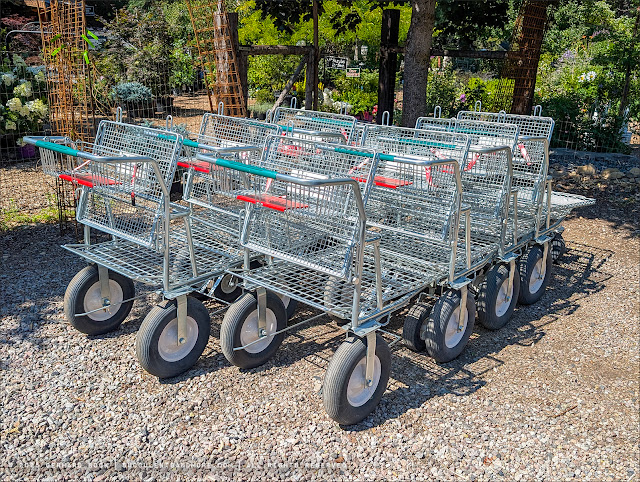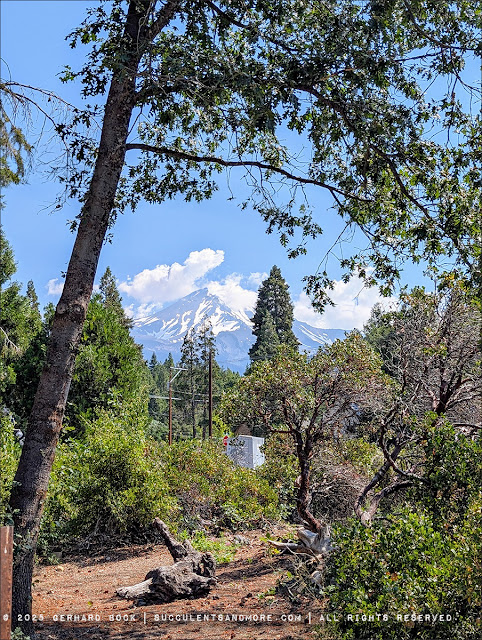My mother-in-law lives in Mount Shasta, a small town at the base of the 14,179 ft. volcano of the same name, about 40 miles south of the Oregon border. On a recent visit, we did something I hadn’t done in a long time: we went on a nursery crawl. Well, “crawl” might be a bit of an exaggeration, seeing how there are just two nurseries in town. However, considering that greater Mount Shasta City has a population of barely 4,000, it’s actually quite amazing that it can sustain two independent nurseries. The fact that Mount Shasta attracts a diverse range of people, from outdoor enthusiasts to spiritual seekers and believers in Bigfoot and other mythical beings, and has the highest real estate values in the region may have something to do with it.
In contrast, Davis has a population of 66,000 and one of the best public universities in California, and all we have is one small independent nursery and an even smaller Ace Hardware garden center, both with limited selections.
 |
| Location of Mount Shasta vs. Davis/Sacramento. The distance is 170 miles. |
 |
| The beefiest carts I’ve ever seen at a nursery |
 |
| Haha, so true! |
One thing I noticed immediately were the colorful display beds. Every nursery has them, but here they’re beautifully integrated into a park-like setting. This is the kind of place you come to when you’re stressed and need to unwind.
 |
|
Located at an elevation of 3,600 ft., with the mountain rising another 11,000 ft. above it, Mount Shasta City is in zone 7b/8a according to the
2023 USDA Hardiness Zone Map. That corresponds to average annual minimum winter temperatures of 5 to 15°F. The inventory at Spring Hill Nursery reflects that; some plants that would be perennials in our zone 9b climate are sold as annuals.
 |
| Abutilons are borderline in zone 7b but worth a try |
 |
| Sold as annuals here, perennials where I live |
Perennials that apparently thrive in Mount Shasta but would die a quick death in Davis:
 |
| This is one of those plants I have only seen in photos. I think it’s a bugloss, aka Brunnera. |
 |
| I know sempervivums are dime a dozen in many places, but to me, they’re exotic because they’re so challenging to grow in our hot-summer climate. |
 |
| Perennials |
 |
| Wild carrot or Queen Anne’s lace (Daucus carota) may be a weed to some, but look at how beautiful it can be |
 |
| I love the flowers — little balls unfolding |
 |
| This espaliered apple tree... |
 |
| ...looks like it’s been here for a year or two |
 |
| My MIL’s plant haul |
 |
| And yes, there is a view of the mountain from the nursery |
Spring Hill Nursery is located at 1234 Nixon Road in Mount Shasta. It’s open daily, from spring to fall, from 9 am to 6 pm. Visit
their website for more information, including a calendar of events. It looks like the nursery is a very active hub, not just for gardeners, but for the community at large. Stop by if you ever find yourself in Mount Shasta!
© Gerhard Bock, 2025. All rights reserved. To receive all new posts by email, please subscribe here.


























Lovely photos. Your first plant picture is a Pulmonaria. No wonder you're unfamiliar as your hot summers here would fry them in minutes!
ReplyDelete